Using the Creative Problem Solving Profile (CPSP) for Diagnosing and Solving Real-World Problems
Min Basadur
Basadur Applied Creativity Center for Research, CAN
Garry Gelade
Basadur Applied Creativity Center for Research, CAN
Introduction
Organizations around the world face a common challenge: the need to improve their performance in order to capitalize on rapid change. In North America, restructuring and downsizing have become a way of life as organizations struggle to regain market share from global companies producing higher-quality products. In eastern Europe, managers and employees strive to establish new behaviors and procedures that will allow their companies to compete in the free market. In the developing world, countries hungry for economic development look for growth markets abroad. In Japan, organizations that once had a clear target—to overtake their western competitors—now lack a blueprint for further progress.
A SIMPLE BLUEPRINT
Mott (1972) presented evidence that effective organizations display three characteristics: efficiency, adaptability, and flexibility. The efficient organization follows well-structured, stable routines for delivering its product or service in high quantities, with high quality, and at low cost. In a stable world, efficient organizations may be successful. But in a changing world, organizations also need adaptability. While efficiency implies mastering a routine, adaptability means mastering the process of changing a routine. Adaptable organizations monitor the environment for new technologies, ideas, and methods, anticipate threats and opportunities, and implement changes accordingly. They deliberately and continually change their routines to improve quality, raise quantities, reduce costs, and stay ahead of their competitors. The most effective organizations are both efficient and highly adaptable. While adaptability is a proactive process of looking for ways to change, flexibility is reactive. Flexibility allows the organization to react quickly to unexpected disruptions without getting mired in organizational bureaucracy. It allows the efficient organization to deal with disruptions while maintaining its routines. In today's rapidly changing world, leaders of effective organizations aiming to achieve sustained competitive edge induce not merely efficiency and flexibility but adaptability.
THE PROCESS APPROACH TO APPLIED CREATIVITY
Basadur (1992, 1995) provided evidence that organizations can attain sustainable competitive edge by institutionalizing creativity as an organization-wide process. In this article, we suggest a multi-stage process model for understanding and implementing organizational creativity. We outline this multi-stage process in terms of different ways of gaining and using knowledge. Recognizing that individual preferences vary for different stages of the process, the article describes the Creative Problem Solving Profile (CPSP) inventory, a practical tool that helps in understanding organizational creativity as a process and serves as a method of diagnosing and solving real-world problems. We outline several real-world applications of the CPSP and suggest avenues for future research.
A NEW THEORY OF CREATIVITY AS A CIRCULAR, MULTI-STAGE PROCESS
Adaptability is driven by organizational creativity, which can be defined as a continuous process of thinking innovatively, or of finding and solving problems and implementing new solutions. Various researchers have focused on the circular nature of adaptability, or the creative process. Gordon (1956, 1971) recognized that knowledge acquisition (learning) and knowledge application (for inventing) flow continuously and sequentially into one another. Field research by Carlsson et al. (1976) supported Gordon's approach by showing that the organizational research and development (R&D) process follows a continuous, circular flow of creating new knowledge to replace old knowledge. Consistent with these findings, Basadur's field work (1974, 1983) on organization-wide deliberate change depicted the creative process as a circle, recognizing that new problems and solutions lead continuously to further problems and opportunities. Each quadrant in the circle corresponds to a specific stage of a four-stage creative process. The first two quadrants represent the components of problem finding: generation and conceptualization. The third and fourth quadrants represent problem solving (optimization) and solution implementation as the final two stages of the creative process. In each stage, people gain and use knowledge and understanding in various ways.

Figure 1 The four stages of the creative process
The complete process is called the Simplex Creative Problem Solving process (Figure 1). Basadur et al. (1982) demonstrated that individuals and organizations could deliberately develop skills in executing each stage of this process, and in executing the complete process. Additional field research supporting the practicality of applying this process in organizations is summarized in Basadur (1994, 2000).
THE FOUR STAGES OF CREATIVITY
Following is a brief description of the four quadrants integrating the concepts of the various researchers above.
Quadrant 1: Generating
The first quadrant gets the creative process rolling. Creative activity in this quadrant involves gaining knowledge and understanding by physical contact and involvement in real-world activities, and utilizing this knowledge to create new problems, challenges, opportunities, and projects that are potentially worth defining and undertaking through subsequent solving and implementing. Understanding is derived from what is experienced, including emotions and feelings of self and others through empathy. New possibilities are imagined from what is concretely experienced. Quadrant 1 activity thus consists of sensing, seeking, or anticipating problems and opportunities, and is called generation. An outcome of this stage is a problem worthy of investigation but not yet clearly defined or understood.
Edwin Land, in a Life magazine cover story (Callahan, 1972), told the tale of his invention of the Polaroid camera. Having snapped the last exposure on his film, he suggested to his young daughter that they take the film for processing so that they could see the pictures in about a week's time. Her frustrated response was, “Why do I have to wait a week to see my picture?” Like a flash bulb going off in his mind, her simple question sparked a challenge that had never occurred to him: “How can we make a device that yields instantaneous pictures?” Within about an hour, he had formulated several directions toward a solution. And within about four years, he had commercialized a product that has changed our lives. Looking back, the then-chairman of Polaroid said that the most important part of the process was not finding the solution itself—the camera—but finding the problem—how to get instantaneous pictures. If Land had not experienced the chance encounter, he might never have created the problem to be solved. He thus demonstrated the generation stage of the creative process: initiating problems to solve instead of waiting for problems to be provided.
At Japan's electronics giant Toshiba, most engineers and scientists beginning their careers in research and development actually start working in the sales department (Basadur, 1992). This apparently backward approach is designed to teach them the process of problem finding. Since they will spend their working lives creating products to solve customers' problems, what better start than by learning first-hand about their customers, their needs, their habits, and their problems—both visible and hidden. At Nippondenso, a major auto parts supplier, employees are trained and encouraged from day one to find problems, to be discontented with their jobs. Employees write down their “discontents” and post them for co-workers to read. Here and at many other Japanese companies, this is the start of the creative process called the employee suggestion system. What is important is that the entire suggestion system hinges on problem finding.
Quadrant II: Conceptualizing
The second quadrant, conceptualizing, keeps the creative process going. Creative activity in this quadrant involves gaining knowledge and understanding mentally, or working in the abstract—analyzing, pondering, and theorizing about the information received to create a sound conceptualization or model of the problem domain. Understanding is not gained by direct experience, but instead by detached, abstract thinking. What is understood through rational, systematic analysis is turned into new insights that help define problems, and create theoretical models and ideas to explain things. Quadrant II activity consists of turning a problem recognized in Quadrant I into a well-understood problem definition and some fledgling solution ideas and, thus, is called conceptualization.
For example, the senior author was once asked for help by a Procter & Gamble product development team formed at short notice to respond to a competitor's new product. Colgate's green-striped Irish Spring had been the first striped soap bar introduced to North America. With its aggressive advertising campaign emphasizing “refreshment,” Colgate's new product was finding ready consumer acceptance. Procter & Gamble worked by the rule that, if a team (or person) was the second entrant into a new market, it had to demonstrate a product's competitive advantage before it could carry out a market test. When asked what was going wrong, the team members said that they had been unable to produce a green-striped bar that worked better than Irish Spring in a consumer preference blind test. The team had experimented with several green striped bars, all of which merely equaled Irish Spring in blind testing. It became evident that the team had chosen to define its problem as: “How might we make a green-striped bar that consumers will prefer over Irish Spring?”
During a creative problem solving meeting, one of the important activities was to develop alternative ways to define the challenge. The flash of inspiration came from an answer to a question posed from a consumer's point of view: “We want to make a bar that makes people feel more refreshed.” This led to the new conceptualized challenge: “How might we better connote refreshment in a soap bar?” This less restrictive conceptualization, which included no mention of green stripes, provided more room for creative solutions. The team broke this new problem into three separate components: “How might we better connote refreshment in appearance, shape, and odor?”—a new conceptualization—and then focused their imaginations on ideas. Beginning with the product's appearance, they visualized scenes, images, and situations that suggested refreshment. One pictured himself at the sea coast. Another imagined sitting on a beach and looking at a blue sky and white clouds. Later, when the team sat back to evaluate its many ideas, these two ideas were selected and combined. The result was the concept of a blue-and-white swirled bar with a unique odor and shape. The concept later achieved market success under the brand name Coast. By leaping prematurely into solutions, the team had wasted almost six months before coming up with a superior conceptualization.
Quadrant III: Optimizing
The third quadrant moves the creative process further. Creative activity in this quadrant involves gaining knowledge and understanding mentally by working in the abstract: thoroughly analyzing a defined problem and utilizing this knowledge to develop and evaluate ideas and options and create an optimal, practical solution. What is understood through rational, systematic, and orderly analysis is used to mentally evaluate situations and options to convert abstract ideas into practical solutions and plans. Quadrant III activity is called optimization. At this point, a good solution to an important, well-defined problem exists, but has not yet been implemented.
For example, the newly defined concept of a refreshment bar in the example above still had to be converted into a practical solution. The team's engineering members created and evaluated several optional versions of the new appearance, odor, and shape. The options were evaluated on several criteria, including cost, feasibility, and time to implement. A final optimal prototype was chosen and successfully tested with consumers, demonstrating an exploitable competitive advantage over its competitor.
Quadrant IV: Implementing
The fourth quadrant completes the creative process. Apprehension in this quadrant involves gaining knowledge and understanding by physical contact and involvement in the real world. Utilization consists of employing evaluation to convert this knowledge into implemented solutions that work and accomplish valuable results. What is experienced and felt is used to evaluate. Creative activity in this quadrant consists of gaining experience with new solutions, evaluating the outcomes, and making adjustments to implement them successfully. Thus this stage is called implementation.
For example, in the above refreshment bar example, the team was still not finished. Before the new soap formula could be sold, a patent problem in the machinery design had to be overcome. There were already no fewer than six worldwide patents restricting how blue-and-white soap pastes could be blended. The team had to find a machine design to make the new product without infringing on anybody else's technique. The team assembled diverse points of view in a special group of engineers, technicians, lawyers, and even a few people who were unfamiliar with soap technology. Sketches and prototypes of the patented processes were displayed and examined and the equipment was adjusted and rebuilt repeatedly until a breakthrough insight emerged and the new product was finally produced satisfactorily for delivery and purchase. A full cycle of the creative process was now complete.
CONSTRUCTING THE FOUR-STAGE CPSP THEORY
In most of the research literature from the 1950s to the 1980s (see review by Basadur, 1994), creativity was perceived largely as generating ideas to presented problems using techniques such as brainstorming. However, practitioners who employ such limited conceptions of the creative process seldom attain practical results (Sternberg et al., 1997). More recently research has focused on creativity as a multi-stage process (Basadur, 1994, 1995; Kabanoff & Rossiter, 1994; Rickards, 1994). Other models of creativity as a process of stages include Wallas's (1926) four stages of preparation, incubation, illumination, and verification; the Osborn-Parnes five-step process of fact finding, problem finding, idea finding, solution finding, and acceptance finding (Parnes et al., 1977); Amabile's (1988) five stages of presentation, preparation, generation, validation, and assessment; Boyd's OODA (Observe, Orientate, Decide, Act; Hammond, 2001); and Kelly's (1955) theory of personal constructs. Additional models are provided in Rickards (1994), Kabanoff & Rossiter (1994), and Basadur (1995).
Beyond merely identifying stages or steps, our model explains and measures each of four stages through established psychological cognitive constructs that differentiate each stage from the others. Each stage represents a different kind of creativity that contributes to the complete creative process of Figure 1. These explanations and measures are based on selected fundamental theories and constructs of intelligence and mental operations associated with creative thinking. These theories are Guilford's (1967) landmark Structure of Intellect (SOI); Sternberg's (1988) triarchic intelligence; Osborn's (1953) pioneering four brain functions concept; and Parnes et al.'s (1977) disciplined freedom paradigm.
OSBORN'S FOUR BRAIN FUNCTIONS AND GUILFORD'S FIVE MENTAL OPERATIONS
Osborn (1953) modeled the brain as having four distinct functions: absorb (gaining knowledge), retain (memory), imagine, and judge. Osborn advocated developing skill in deferring judgment, or using the imagination and judgment functions independently. Developing Osborn's model further, Parnes et al. (1977) created a simplified formula for creativity as follows: C (creativity) = K (knowledge) × I (imagination) × E (evaluation). Their term “disciplined freedom” emphasizes that creativity requires a balance of knowledge and imagination and good judgment.
Guilford (1967) identified two very different ways of gaining knowledge. One way is the mental operation of cognition, or gaining knowledge by experiencing, which he described as the immediate discovery, awareness, rediscovery, or recognition of information. We suggest that some people gain understanding preferentially by such physical processing of information—what we call experiential intelligence (Basadur & Gelade, 2002). The other way of gaining knowledge is what Guilford called the mental operation of convergent production. Guilford described convergent production as the generation of information from given information to achieve unique or conventionally accepted best outcomes in which the given information often fully determines the response. This is also what Sternberg (1996) defined as theoretical, analytical intelligence. We suggest that some people gain understanding preferentially by such mental processing of information. Further, we suggest that people use knowledge by two very different methods, no matter how that knowledge is gained. One way of using knowledge is what Guilford called the mental operation of divergent production, or creating options from information. This operation resembles Sternberg's construct of creative intelligence. The other way of utilizing knowledge is what Guilford called the mental operation of evaluation, or evaluating options (the main component of what Sternberg called practical intelligence).
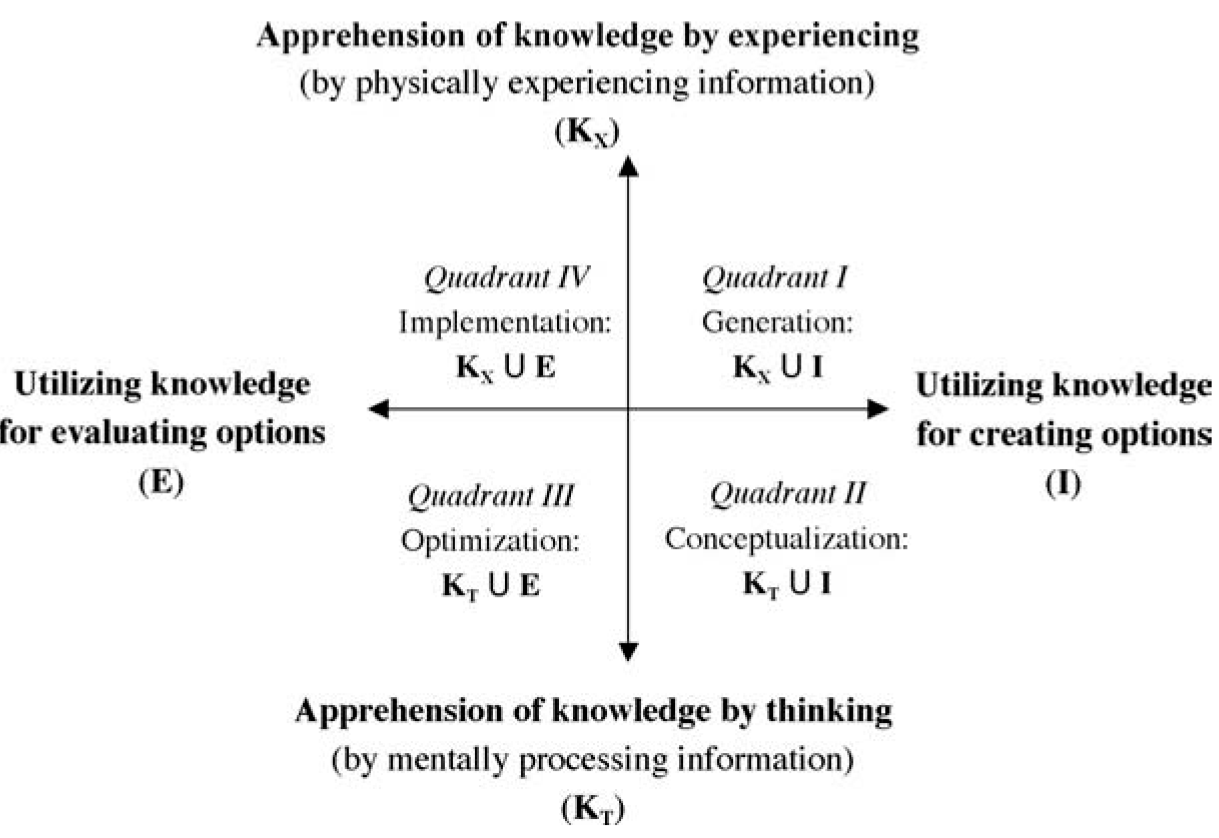
Figure 2 Four combinations of different methods of gaining and using knowledge
We suggest a new simplified formula: C = (KX + KT) × I × E, in which KX is knowledge apprehension by experiencing and KT is knowledge apprehension by theoretical analysis (thinking); see Figure 2. We also suggest that there are two dimensions underlying the process of Figure 1. The first dimension, apprehension, involves acquiring knowledge or understanding in two different ways. One is relatively more open, non-rational, experiential, nonanalytical, and divergent (cognition); the other is more closed, rational, theoretical, analytical, and convergent (convergent production). The second dimension of Figure 2, utilization, involves applying knowledge or understanding (however acquired) in two different ways: nonjudgmentally creating new information to increase the variety of options (divergent production), and judgmentally reaching decisions about new information to reduce the variety of options (evaluation).
In Figure 2, the four stages depicted in Figure 1 are explained as combinations of these two bipolar dimensions. Combining the preference for learning experientially (KX) with the preference for creating options (I = ideation) yields a measure of preference for the first stage of the process, or generation (KX ∪ I). Combining the preference for learning theoretically (KT) with the preference for creating options (I) yields a measure of preference for the second stage, or conceptualization (KT ∪ I). Combining the preference for learning theoretically (KT) with the preference for evaluating options (E) yields a measure of preference for the third stage, or optimization (KT ∪ E). Combining the preference for learning experientially (KX) with the preference for evaluating options (E) yields a measure of preference for the fourth stage, or implementation (KX ∪ E).
MEASURING INDIVIDUAL STYLES AND PREFERENCES
Individuals in organizations have varying preferences for each of the quadrants or stages in the creative process because they have varying preferences for the bipolar modes of apprehension and utilization. Generating ideas for new products, services, and methods must start somewhere. Individuals inclined toward generating are continually experiencing and scanning the environment, picking up data and cues from customers, suppliers, and others, and suggesting possible opportunities for change and improvement. Thus, the generation stage is where new information and possibilities are raised—usually not fully developed but in the form of starting points for new projects. People with dominant conceptualizer styles lead in compiling facts and idea fragments from the generator stage into well-defined, insightful problems and challenges and more clearly developed ideas and projects worth further evaluation. Skilled conceptualizers give sound structure to fledgling ideas and opportunities. People inclined toward optimization usually lead in taking these well-defined ideas and finding a practical best solution and detailing efficient plans for proceeding. Finally, implementers lead in carrying forward the practical solutions and plans, including convincing colleagues or customers of the worth of the changes, and adapting the solutions and plans to make them fit real-life situations and conditions.
THE CREATIVE PROBLEM SOLVING PROFILE (CPSP) INVENTORY
The Creative Problem Solving Profile (CPSP) inventory measures an individual's unique blend of preferences for the four stages of the process in Figures 1 and 2. Plotting inventory scores on a two-dimensional graph displays an individual's preferred blend of the four different stages. The largest quadrant on the graph represents the preferred or dominant style, with relative sizes of the other quadrants representing supporting orientations. The unique blend of styles is the individual's profile. Figure 3 shows how individual differences in orientation can yield different creative problem solving process styles and profiles. If the area of quadrant 1 is largest, the primary process style is generating; if quadrant 2, then conceptualizing; if quadrant 3, then optimizing; and if quadrant 4, then implementing. Each of these styles reflects individual preferences—and preferences of teams and entire organizations—for ways of gaining and using knowledge.

Figure 3 Examples of different profiles of creative problem solving with the same style dominant and with different styles dominant.
The CPSP's scale construction, scoring, interpretation, reliability, and validity have been fully described by Basadur and Gelade (2002), but a brief summary is presented here.
The CPSP questionnaire consists of 12 scored items, and six distractor items that are not scored. Each scored item consists of four words, descriptive, respectively, of learning experientially (KX), learning theoretically (KT), creating options (I), and evaluating options (E). Respondents are asked to decide which words are most characteristic of their problem solving style, and to rank the four words from one (“least characteristic of me as a problem solver”) to four (“most characteristic of me as a problem solver”) within each item accordingly. An individual's CPSP profile is obtained by summing their scores on KX, KT, I, and E respectively; plotting the resulting totals on the axes shown in Figure 2, and constructing the quadrants as shown in Figure 3, gives a pictorial representation of the respondent's problem solving preferences.
As reported in Basadur and Gelade (2002), factor analysis of the questionnaire scores confirms the existence of two orthogonal bipolar dimensions corresponding to KX-KT and I-E, and scores on these dimensions show satisfactory reliability (alpha = .80). Convergent validity has also been demonstrated with the Kirton Adaptation Innovation Inventory and the Myers-Briggs Type Inventory (Basadur et al., 1990; Basadur, 1998; 2000).
STATES NOT TRAITS, AND ALL FOUR QUADRANTS ARE CREATIVE
This Creative Problem Solving Profile (CPSP) inventory measures states, not traits. No one quadrant is considered any more “creative” than any other. All four quadrants require creativity of different kinds. Each quadrant contributes uniquely to the overall innovative process and innovative results. An individual's unique creative problem solving profile shows only their preferred activities within the Simplex Creative Problem Solving process. Most people enjoy some stages more than others. A particular style reflects relative preferences for each of the stages of the process: generating, conceptualizing, optimizing, and implementing. A person's thinking processes cannot be pigeonholed in any single quadrant. Rather, they are a combination or blend of quadrants. A person will likely prefer one quadrant in particular, but also have secondary preferences for one or two adjacent quadrants, as shown in Figure 3. Skills are needed in all stages.
Everyone has a different valuable creative contribution to make to the innovation process as a whole. One goal is to capitalize on an individual's preferred orientation, thus making their work more satisfying and pinpointing development opportunities. Another goal is to tap resources in all four quadrants to help the individual, team, or organization cycle skillfully through the complete innovation process.
ORGANIZATIONS HAVE THEIR OWN PROFILES
Entire organizations also have creative process profiles. An organization's profile reflects such factors as the kinds of people it hires, its culture, and its values. For example, if an organization focuses almost entirely on short-term results, it may be overloaded with implementers with few conceptualizers or generators. The organization will show strengths in processes that deliver its current products and services efficiently. But it will show weaknesses in long-term planning and product development that might help it to stay ahead of change. Rushing to solve problems, this organization will continually find itself reworking failed solutions without pausing to conduct adequate fact finding and problem definition. By contrast, an organization with many generators or conceptualizers and few implementers will continually find good problems to solve and great ideas for products and processes to develop. But it will never carry them to their conclusion.
Following are a case study and additional real-world examples of how organizations may apply the CPSP to diagnose problems and improve creativity and innovation performance.
REAL-WORLD APPLICATIONS OF THE CPSP
A CASE STUDY
By 1981, an automobile manufacturer had suffered several losing business quarters. In an effort to change its operations, the company had launched many initiatives. One of the most important was its decision to involve its people in improving quality and customer satisfaction and increasing innovation. The company wished to involve managers in actually “managing the business” rather than just “doing my job.”
The company and its union had agreed to implement a joint employee involvement (EI) program for unionized employees. Both sides provided resources, including both unionized and salaried employees, to diagnose important training needs and to create strategies and programs to meet those needs. Their first step was to form problem solving groups in the plants, guided by local and national joint steering committees. To build skills in problem solving, these groups had been taught standard analytical tools borrowed from statistical process control and total quality management programs (such as “cause-and-effect diagramming” and “cause-unknown diagnosis”).
The company now wished to expand employee involvement to include salaried employees, and to develop problem solving processes that were better suited for their jobs. The organization hoped that these employees and their managers would take more initiative in identifying opportunities for improvement and tackling them creatively. During a pre-consult and preliminary training workshop for several key employees, we agreed on a strategy to train a number of employees in applying the Simplex process and in training others in the company.
During this training, we had a chance to apply the process to a problem at a newly modernized plant that made a major component of the company's new front-wheel-drive automobiles. The plant was setting new records for quality and low cost, but one department was struggling. Only about one-third of its output met the company's high quality standards, and employees had to work heavy overtime schedules in order to keep up with orders. The plant managers had tried several quick-fix solutions to resolve the production and quality problems, but none had worked. We established a cross-functional team of 15 plant managers and supervisors in order to apply the Simplex Creative Problem Solving process to the problem.
Along with one of the company's internal consultants who was training as a Simplex facilitator and trainer, the senior author conducted the application session with this team. About half a day was set aside for training in the Simplex process and process skills, and two and a half days to apply the process to the team's fuzzy situation. During the training, the team members were asked to complete the Creative Problem Solving Profile (CPSP) inventory to identify individual differences in preferences for various stages of the creative problem solving process.
The team discovered a very revealing insight. Of the 15 team members, eight showed creative problem solving styles heavily oriented toward quadrant 4, or implementation. The other seven showed styles heavily oriented toward quadrant 3, or optimization. None had creative problem solving styles oriented toward quadrants 1 or 2 (generation and conceptualizing). The team was composed of people who preferred to jump quickly to action rather than carry out fact finding and problem definition. Team members were able to identify many instances when they had mistakenly made assumptions about this particular problem, leading to one failed solution after another. Rather than take the time to define the problem accurately, they had simply jumped from the fuzzy situation to one solution after another. They had spent all of their time alternating between quadrants 3 and 4, and none in quadrants 1 or 2 (Figure 4).
These solution- and action-oriented individuals agreed to spend two days in quadrant 1 and 2 activity, gathering facts and defining problems (Figure 5)—even though the whole exercise was against their nature. Three specific problem definitions emerged from this exercise. On the third day, the group was able to create simple but specific solutions to each defined problem that it could quickly implement. Within several months, most of the plant's production was high quality and was still improving.
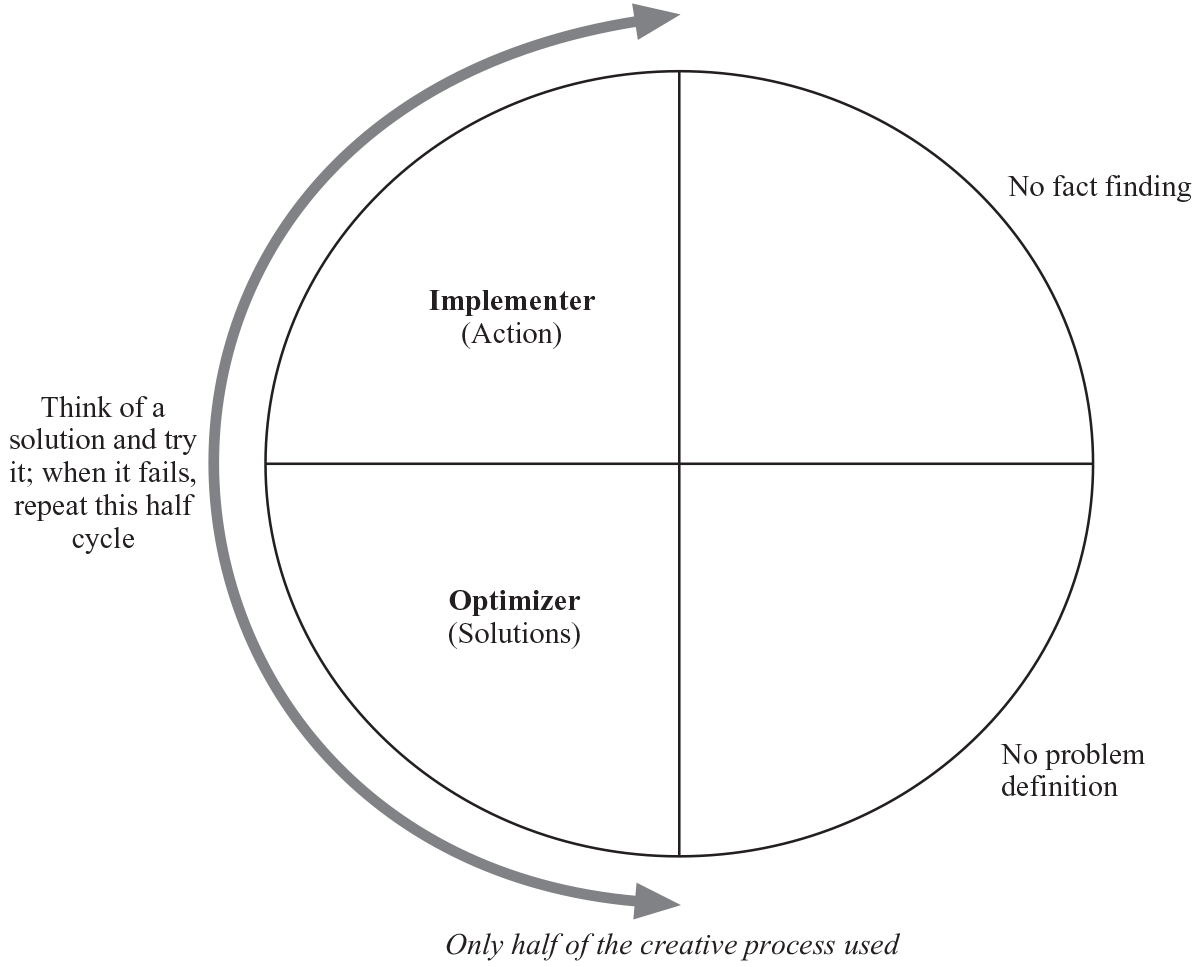
Figure 4 The results of heavy orientation toward quadrant 3 and 4 thinking styles.
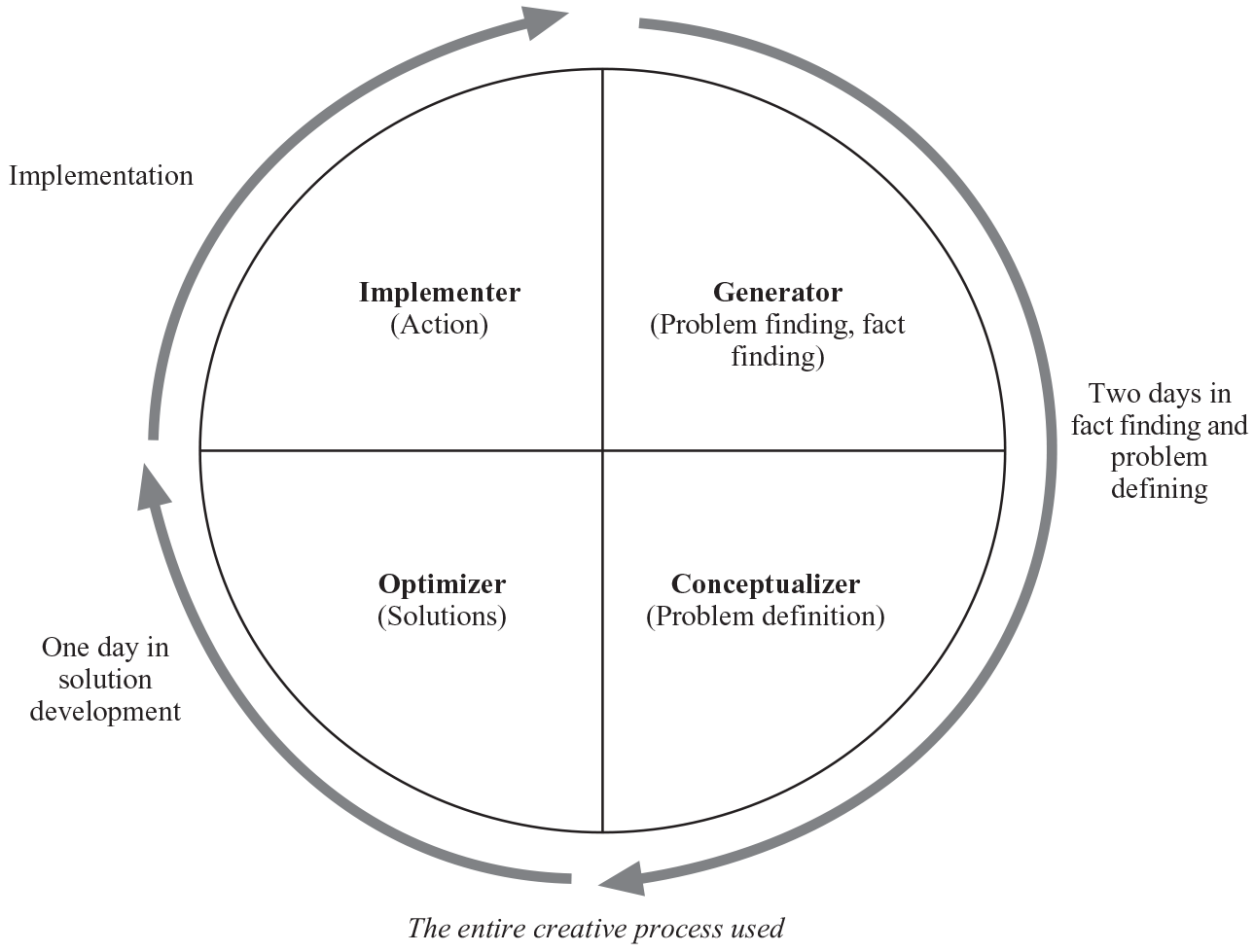
Figure 5 Balancing orientations toward all four thinking styles.
A DIAGNOSTIC TOOL
On the following pages are four examples of CPSP scatter diagrams, which depict the array of preferences for each of the four quadrants of the creative process for individuals within a team or organization. Each • symbol represents an individual's pair of coordinates derived from their score on the vertical apprehension axis (XT) coupled with their corresponding score on the horizontal utilization axis (IE).
The first scatter diagram displays the preferences of a typical group of managers in a large engineering company servicing the aircraft, airline, and aerospace industries (Figure 6). Most middle and senior managers in the company are strongly oriented toward action rather than toward generating new opportunities. The company has established high growth targets into new products and markets, but is failing to achieve them because of a strong organizational culture that favors quick fixes to short-term problems. To improve its short- and long-term balance, the company is developing a major training effort to increase awareness and encourage more generation and is also creating structures that will encourage employees to participate more in quadrant 1 and 2 activities.
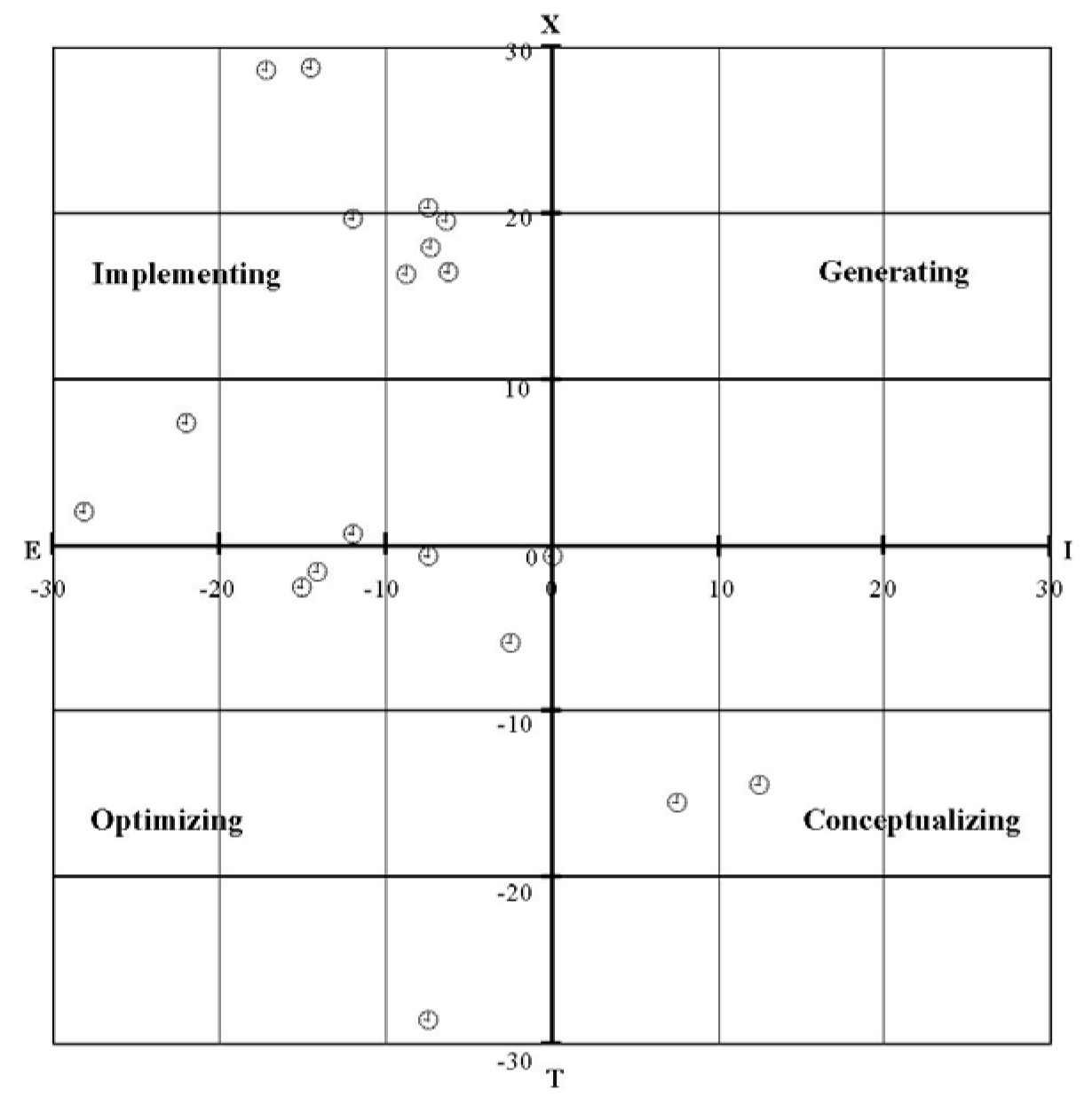
Figure 6 Scatter diagram example #1 Not enough generators.
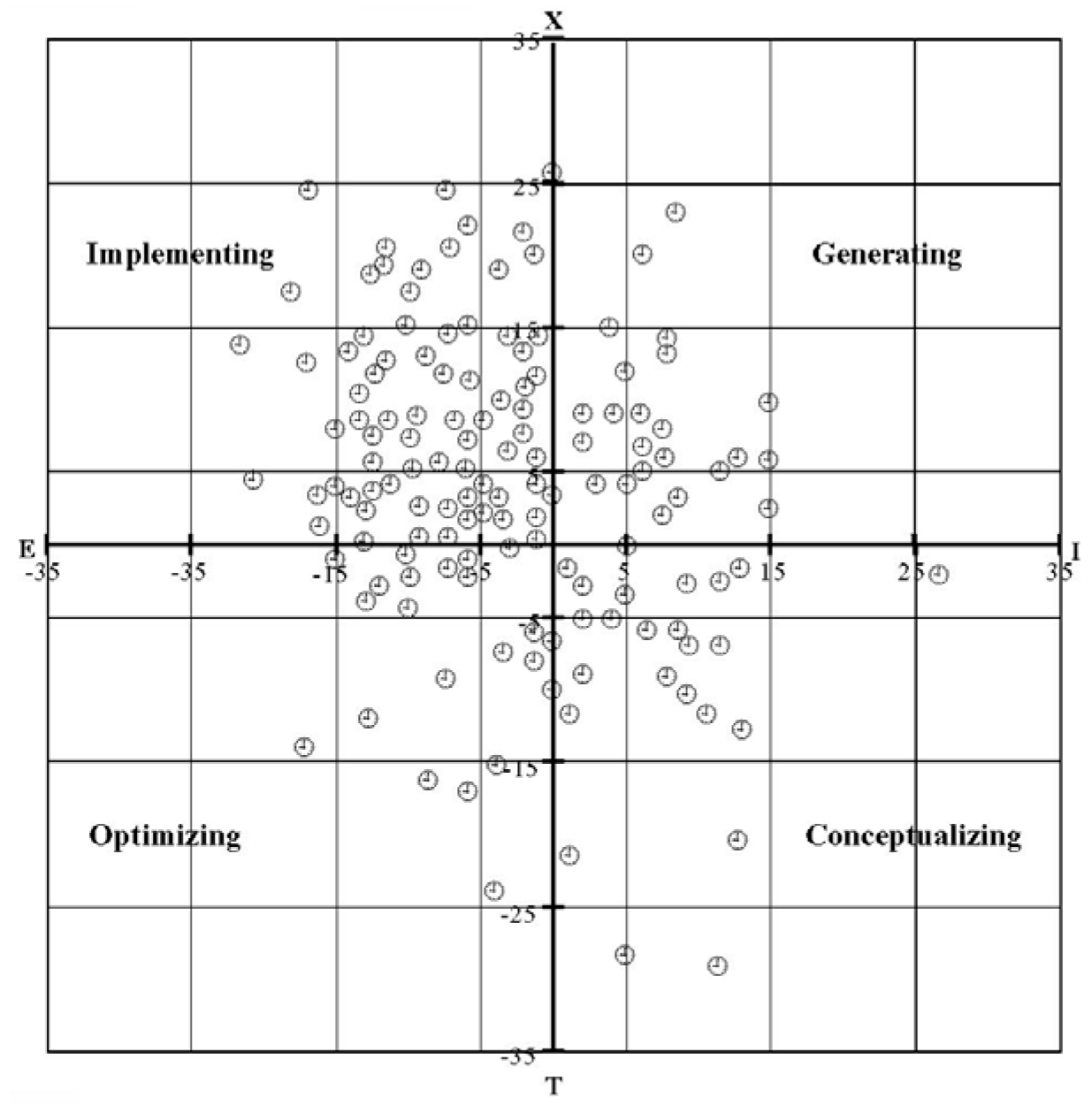
Figure 7 Scatter diagram example #2 Not enough time devoted to conceptualization and optimization.
In the second example, a large bank had formed teams to bring many new financial products to market quickly in a very competitive environment, but those teams were encountering a high percentage of failures. The organization's teams were found to be heavily weighted toward implementers (Figure 7). Further discussion showed that the teams often developed new products by rushing from an initial idea directly into implementation, without spending much time in conceptualization and optimization. Had the teams taken more time for conceptualization, they likely would have identified more limitations in many new product ideas. With more time in optimization, they would have reduced the frequency of product flaws reaching the market. By taking more time through these second and third stages of the process, the teams began to make wiser choices about which new, fledgling ideas to pursue (and which to terminate) and to develop more reliable product designs for market testing.
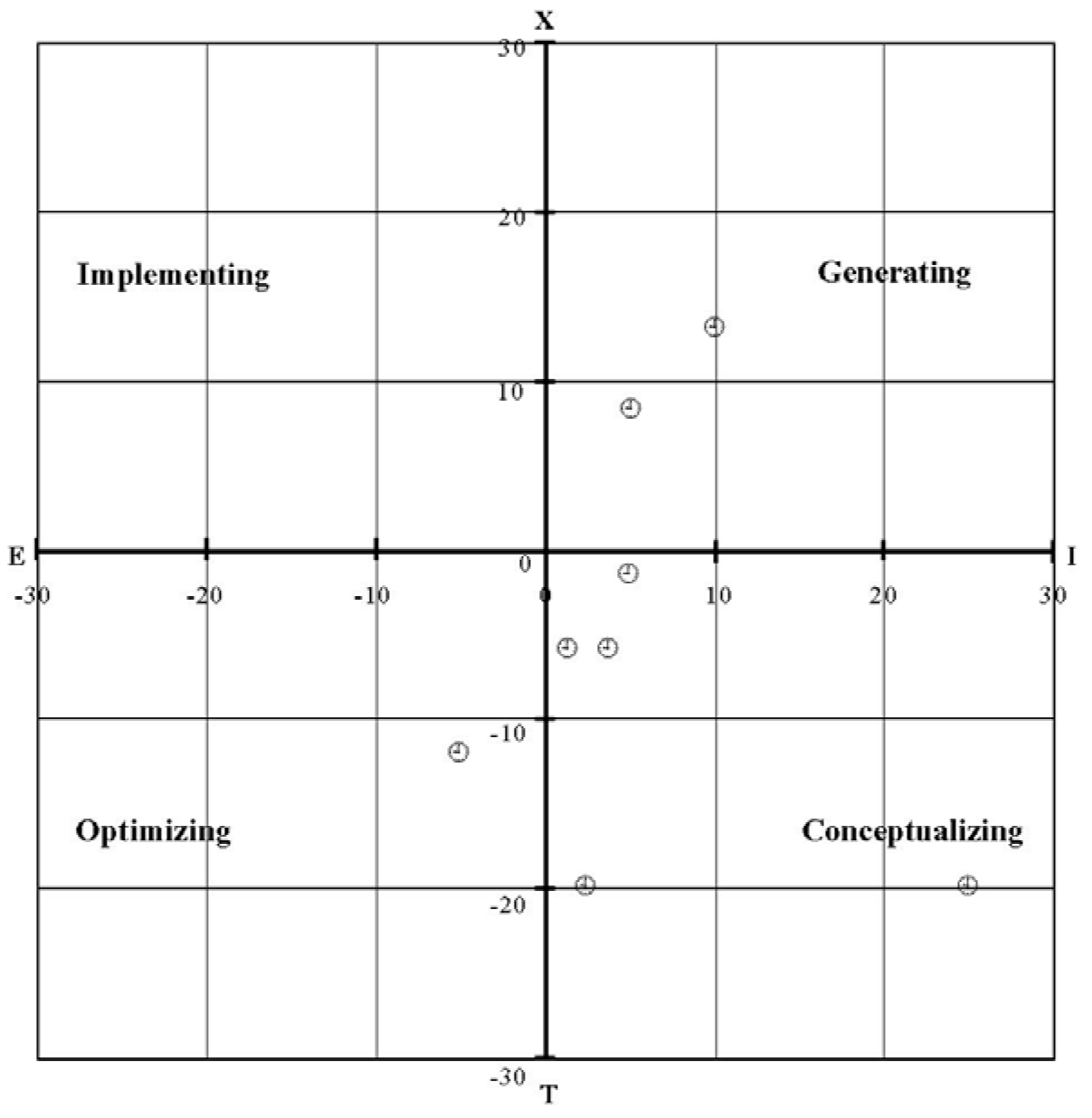
Figure 8 Scatter diagram example #3 Not enough implementers
In the third example, a new managing director was hired specifically to develop a breakthrough product concept and bring it to market. He assembled a team that, in very little time, created a great new idea. However, the team had subsequently ground to a standstill. Members failed to attend meetings regularly and several felt that there was nothing important remaining to be done. Subsequent diagnosis found that all of the team members whom the managing director had intuitively selected were oriented toward quadrants 1 and 2. In Figure 8, the managing director is the lone individual in quadrant 3, and there is no one in quadrant 4, implementation. He now realized that the team needed to add people oriented toward quadrants 3 and especially 4 in order to implement the new product concept successfully.
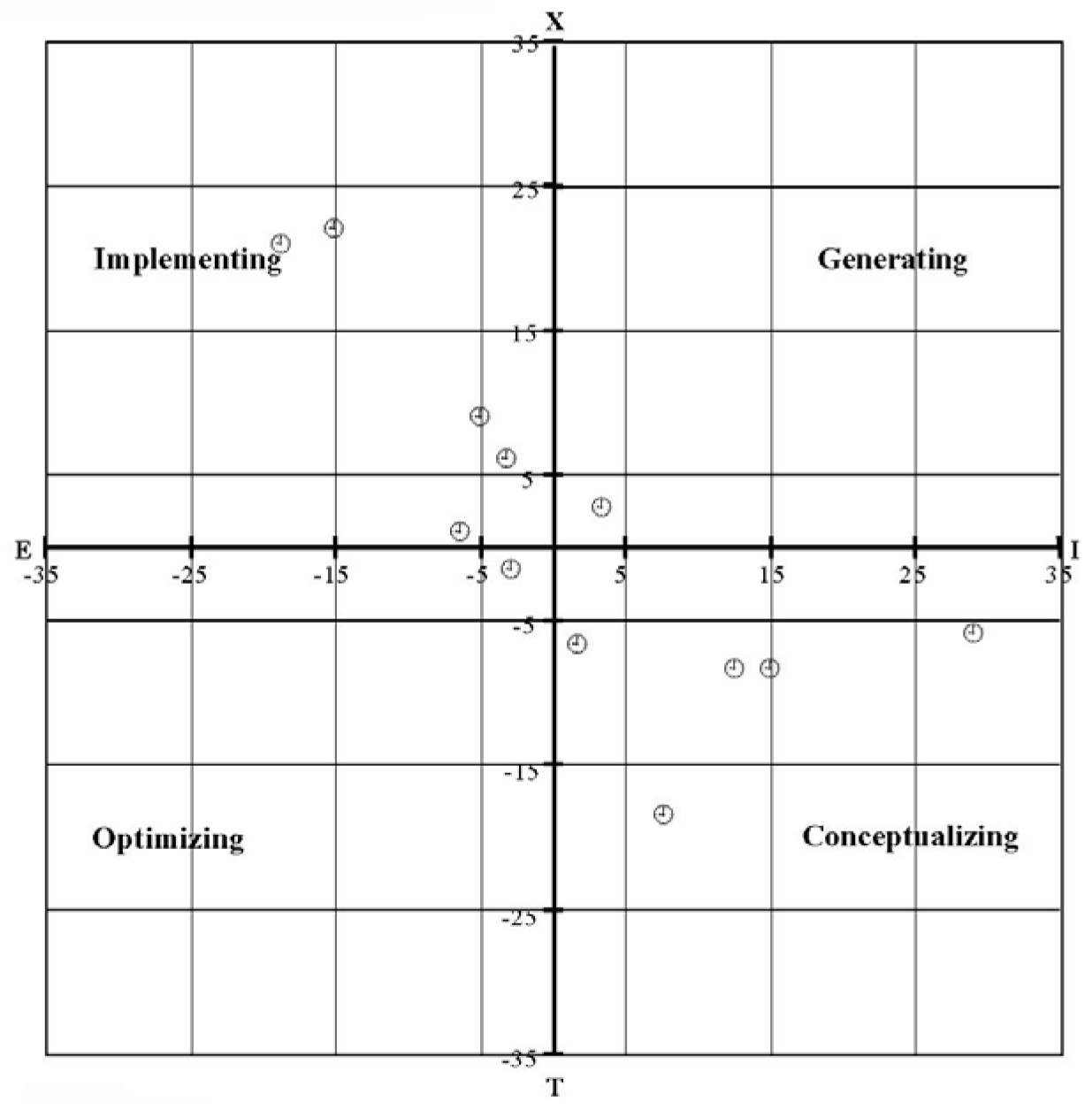
Figure 9 Scatter diagram example #4 An imbalance—not enough generators or optimizers.
The fourth example comes from the management team of a small engineering company that was growing too quickly, allowing many human resource problems to pile up. The company had more business than it could handle: new engineering projects were being designed and implemented with customers all over the world. Left unidentified and ignored by the busy management team, the human resource problems left people feeling severely stressed, overworked, and underappreciated. Resulting high turnover and its deteriorating corporate reputation made it difficult for the company to hire replacements or new staff. As shown in Figure 9, the management team was unbalanced, being virtually devoid of generators and optimizers. Most members were implementers or conceptualizers, demonstrating little interest in either surfacing problems or solving them. As a first step toward ensuring that it identified and solved important people problems, the company hired its first human resources manager for this explicit purpose.
IMPROVING TEAM PERFORMANCE
In a creative organization, everyone is responsible for doing at least one of the four stages defined by Figure 1. Some people initiate new things. Some are responsible for understanding and defining new initiatives and planning. Some produce practical solutions to new problems and initiatives. Others are responsible for finishing things off, or taking action to implement new solutions. If the four-stage process of creativity outlined above adequately represents the creative process, it would be expected that teams with a heterogeneous mix of preferred creative process styles (Figure 1) would significantly outperform teams with a homogeneous mix of creative process styles in innovative work. In the former case, all stages of the process are readily available within the team. One could also predict that members of homogeneous teams would experience more satisfaction working with like-minded team mates.
The predictions were confirmed by a study by Basadur and Head (2001), which assessed groups of MBA students on a problem solving task. Groups including individuals with different styles (heterogeneous groups) outperformed homogeneous groups whose members all had the same style. Rated by a judges' panel on four dimensions of innovative performance, the mean score for the 21 heterogeneous groups was 4.22 (sd = 0.42) and the mean for the homogeneous groups was 3.69 (sd = 0.64); a statistically significant difference (Student's t = 3.0, p < .01). Asked about their teamwork experience, individuals in the heterogeneous groups expressed less satisfaction than those in the homogeneous groups. The mean overall satisfaction for the 57 participants in the heterogeneous groups was 7.50 (sd = 1.98) compared to 8.15 (sd = 1.32) for the 85 participants in the homogeneous groups; a statistically significant difference (Student's t = 2.2, p < .05).
Heterogeneity is often an inherent characteristic of cross-functional teams, as people in various occupations favor different CPSP styles. For example, people in industrial engineering, training and development, and other improvement and change-initiation departments often favor the generator style. Employees in market research, strategic planning, and R&D often favor conceptualizing. People in accounting, finance, engineering, and systems development gravitate toward optimizing. People in manufacturing production, logistics/distribution/warehousing, sales, administrative support, customer service, and operations favor implementation.
No matter which process style an individual prefers, however, a team's members have to learn to use their differences to advantage. Teams, especially those involved in continuous improvement and innovation, require a mix of people who enjoy working in different steps around the Simplex Creative Problem Solving process: finding new problems and opportunities, clarifying and refining those problems and creating ideas, developing practical solutions and plans, and making new solutions work. Whether in teams or not, helping individuals learn to shift among orientations also ensures that the entire organization has a complete blend of process styles. In fact, an individual's dominant orientation is less important than their ability to shift among the different orientations. Preferences for certain quadrants within the innovation process are not static “traits,” but dynamic “states.” Individuals can learn to work in any of the four CPSP quadrants in order to complement others in a given situation.
APPLICATION TO ORGANIZATIONAL ECOSYSTEMS
Basadur and Gelade (2002) report CPSP scores for a sample of 3,942 adults (39 percent female, 61 percent male) in 38 different occupations and working in a wide variety of organizations, including large and small corporations, banks, schools, universities, and hospitals. In this sample, 36 percent were in nonmanagement or supervisory roles, 27 percent in managerial roles, and 25 percent in professional or technical roles; the remainder were in other roles or did not specify their role. High percentages of generators were found in fields such as teaching (56 percent), academia (38 percent), and art (34 percent), and low percentages in fields such as IT systems development (9.5 percent), manufacturing engineering (9 percent), and engineering/engineering design (7.5 percent). Overall, the results suggested that few business and industrial occupations had a high proportion of generators (see Figure 10).
This raises some interesting questions, because the most perplexing challenge for many organizations is how to be more innovative in the face of accelerating change. Indeed, many leading management consultants exhort corporations to “begin their revolutions”—to expand their thinking and do things differently. Rather than simply improve existing methods and procedures, they advocate deliberate change. They advise corporations not to defend old markets, but to explore new ones. Many corporations find this an appealing strategy, although one that is difficult to implement. While one could speculate that a reason for this difficulty may be the lack of employees who prefer the generator style of thinking, this may be an overly simplistic explanation. For example, a single generator might initiate enough work for ten “implementers.” A more productive approach might be to raise broader questions and hypotheses about the appropriate mixes or ratios of the four quadrant preferences within various organizational departments and functions, or within an organization as a whole.
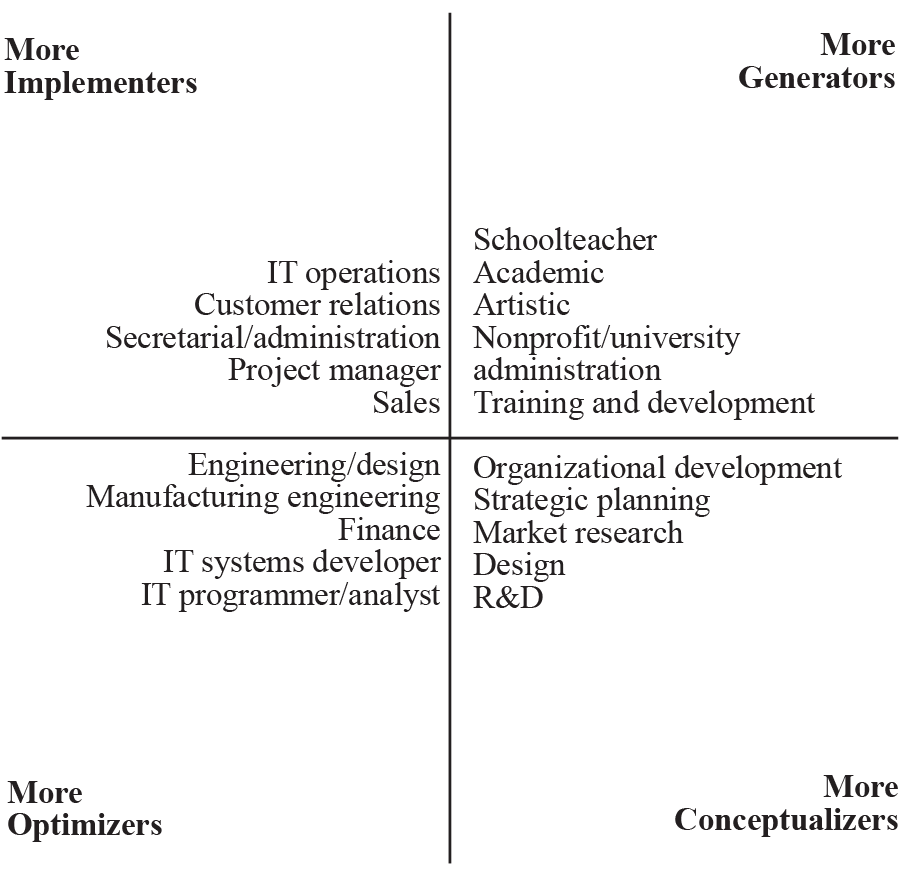
Figure 10 Occupations by dominant quadrant mix.
From an intra-organizational perspective, different ratios of the four quadrants might be appropriate within, say, manufacturing or service organizations, or within the particular departments of a given organization, such as R&D, sales, IT, or finance. The optimal mix for a top management team might differ from that for a lower-level team. Our previous research (Basadur, 1994, 1995) has suggested that a business unit's optimal ratio may depend on the typical proportion of work oriented toward problem finding rather than toward problem solving or implementation.
From an inter-organizational perspective, management consultants exhorting client organizations to initiate deliberate change could be viewed as performing the generator function from outside the organization. However, outside consultants are considered as being weak at delivering whole projects (e.g., IT implementations). On the other hand, organizations are often seen as too reliant on outside consultants to identify problems for them and suggest solutions. Perhaps a successful consultant-client relationship requires an optimal blend of quadrant styles among the organization's staff and the consulting or advisory team. Analysis of organizational quadrant styles might identify organizations that would benefit from hiring consultants, and whether project management consultants (project implementers) or change-initiating consultants might be more effective. We also speculate that successful consultants or consultant teams function effectively in more than one CPSP quadrant in order to maintain an optimal balance of quadrant styles when working with organizational teams. Other inter-organizational ecosystems, such as customer-supplier relationships, may be viewed similarly. The success of inter-organizational strategic alliances, mergers, or acquisitions may also be dependent on achieving an optimal blend of creative thinking styles, especially at the top level.
SUMMARY AND FUTURE RESEARCH
We have presented a theory of organizational creativity as a process comprising four stages: generating, conceptualizing, optimizing, and implementing. We explain and measure each stage of the process using cognitive constructs from established models of intelligence and educational psychology. These constructs differentiate the mental activities in each stage of the process from those of the other stages. Each stage represents a different kind of creativity that contributes to the complete creative process.
We have also presented a psychological instrument that measures the constructs and stages of the process, called the Creative Problem Solving Profile (CPSP) inventory. Individuals, teams, and organizations may use the CPSP to help diagnose inadequate organizational problem solving and performance. The CPSP also provides a blueprint for people to understand organizational creativity as a process of continually finding and defining important organizational problems, solving those problems, and implementing the solutions.
The four-stage process represented by the CPSP is built on two underlying dimensions: apprehension and utilization. Apprehension involves acquiring knowledge or understanding in two different ways: more open, non-rational, experiential, nonanalytical, and divergent, versus more closed, rational, theoretical, analytical, and convergent. Utilization involves applying knowledge or understanding in two different ways: nonjudgmentally creating new information to increase the variety of options, versus judgmentally reaching decisions about new information to reduce the variety of options. The four stages of the creative process are explained as combinations of these two bipolar dimensions. Individuals in organizations have varying preferences for each of the stages because they have varying preferences for the bipolar modes of apprehension and utilization. The CPSP inventory measures an individual's unique blend of preferences of the four stages, or their creative process “profile.”
Teams and entire organizations also have unique creative process profiles, and the CPSP can be applied to diagnose problems and improve creativity and innovation performance. Heterogeneity of CPSP styles is often an inherent characteristic of interdisciplinary teams, as people in various occupations tend to favor different CPSP styles. Because CPSP preferences are not static “traits” but dynamic “states,” individuals can learn to work effectively in any of the four CPSP quadrants in order to complement other team members' preferences and help the team move smoothly through the four-stage process. Research has shown that more heterogeneous teams outperform more homogeneous teams in innovative work but experience less satisfaction.
Our research indicates that generators (people who prefer stage 1 activity) are the least represented of the four CPSP styles in industrial (business) organizations. In fact, few industrial occupations had a high proportion of generators. The other three stages were better represented occupationally. The overall distribution favored implementers (highest) followed by conceptualizers, optimizers, and generators (lowest). These data suggest several interesting intra-organizational and interorganizational ecosystem questions that might be approached through the framework presented in this article. For example, the effectiveness of organizations, departments, or functions—and relationships among organizations, advisers, customers, suppliers, and strategic partners—may depend partly on the ability to exploit diverse thinking styles and on how well the mix of available styles matches the cognitive work.
Similar considerations might, in principle at least, be extended to the dynamics of creativity and change at higher (supra-organizational) ecosystem levels. Dealing effectively and creatively with change is a challenge not merely for organizations but for entire economic systems, industries, and societies. Our experience of innovation at this level has generally been painful. The charismatic and visionary “generator” with a remedy for society's ills is a well-known archetype. But even the best intentioned of these is likely to cause more harm than good if the thinking stops at this stage. Continued inertia and excessive conservatism are likely either to cause atrophy and decay or build irresistible pressures, leading to an uncontrolled and destructive catharsis. A better understanding of the dynamics of creativity, and the diversity of thinking processes needed to navigate change at the micro level, might contribute to a better understanding of how to avoid such difficulties at the macro level.
References
Amabile, T. M. (1988) “A model of creativity and innovation,” in B. M. Staw & L. L. Cummings (eds), Research in Organizational Behavior, Greenwich, CT: JAI Press: 10, 123-67.
Basadur, M. S. (1974) “Think or sink,” The Deliberate Methods Change Bulletin, July- September, Cincinnati, OH: Procter & Gamble Management Systems Division.
Basadur, M. S. (1983) “Employee involvement creative problem-solving workshop,” Ford Education and Training Catalog, September, Dearborn, MI: Ford Education and Personnel Research Department: 115.
Basadur, M. S. (1992) “Managing creativity: A Japanese model,” Academy of Management Executive, 6(2): 29-42.
Basadur, M. S. (1994) “Managing the creative process in organizations,” in M. A. Runco (ed.), Problem Finding, Problem Solving and Creativity, New York: Ablex: 237-68.
Basadur, M. S. (1995) Power of Innovation, Toronto: AC Press.
Basadur, M. S. (1998) “The Basadur Simplex creative problem-solving profile inventory: Development, reliability and validity,” Management of Innovation and New Technology Research Centre, Working Paper No. 83, December, Hamilton, Ontario: McMaster University.
Basadur, M. S. (2000) “Evaluating the psychometric improvements provided by Basadur CPSP 2-Experimental,” Management of Innovation and New Technology Research Centre, Working Paper No. 99, September, Hamilton, Ontario: McMaster University.
Basadur, M. S. & Gelade, G. (2002) “Knowing and thinking: A new theory of creativity,” Management of Innovation and New Technology Research Centre, Working Paper No. 105, December, Hamilton, Ontario: McMaster University
Basadur, M. S. & Head, M. (2001) “Team performance and satisfaction: A link to cognitive style within a process framework,” Journal of Creative Behavior, 35(4): 227-48.
Basadur, M. S., Graen, G. B., & Green, S. G. (1982) “Training in creative problem solving: Effects on ideation and problem finding in an applied research organization,” Organizational Behavior and Human Performance, 30: 41-70.
Basadur, M. S., Takai, J., & Wakabayashi, M. (1990) “Cross-validation of creative problem solving/creative style inventories: Validating Basadur's CPSP with Kirton's KAI inventory,” in J. Misumi, B. Wilpert, & H. Motoaki (eds), Organizational and Work Psychology: Proceedings of the 22nd International Congress of Applied Psychology, Kyoto, Japan, Vol. 1, Hillsdale, NJ: Lawrence Erlbaum Associates, Inc.: 153-5.
Callahan, S. (1972) “Dr. Land's Magic Camera,” Life, 27 October: 42.
Carlsson, B., Keane, P, & Martin, J. B. (1976) “R&D organization as learning systems,” Sloan Management Review, 17(1): 1-15.
Gordon, W. J. J. (1956) “Operational approach to creativity,” Harvard Business Review, 9(1).
Gordon, W. J. J. (1971) The Metaphorical Way, Cambridge, MA: Porpoise Books.
Guilford, J. P (1967) The Nature of Human Intelligence, New York: McGraw-Hill.
Hammond, G. T. (2001) The Mind of War, Washington, D.C.: Smithsonian Institute Press.
Kabanoff, B. & Rossiter, J. R. (1994) “Recent developments in applied creativity,” International Review of Industrial and Organizational Psychology, 9: 283-324.
Kelly, G. A. (1955) The Psychology of Personal Constructs, New York: Norton.
Mott, P E. (1972) Characteristics of Effective Organizations, New York: Harper & Row.
Osborn, A. F. (1953) Applied Imagination: Principles and Procedures of Creative Problem- Solving, New York: Charles Scribner's Sons.
Parnes, S. J., Noller, R. B., & Biondi, A. M. (1977) Guide to Creative Action, New York: Charles Scribner's Sons.
Rickards, T. R. (1994) “Creativity from a business school perspective: Past, present, and future,” in S. G. Isaksen, M. C. Murdock, R. L. Firestien, & D. J. Treffinger (eds), Nurturing and Developing Creativity: The Emergence of a Discipline, Norwood, NJ: Ablex: 155-76.
Sternberg, R. J. (1988) The Triarchic Mind: A New Theory of Human Intelligence, New York: Viking.
Sternberg, R. J. (1996) Successful Intelligence: How Practical and Creative Intelligence Determine Success in Life, New York: Simon & Schuster.
Sternberg, R. J., O'Hara, L. A., & Lubart, T. I. (1997) “Creativity as investment,” California Management Review, 40(1): 8-21.
Wallas, G. (1926) The Art of Thought, New York: Harcourt Brace.